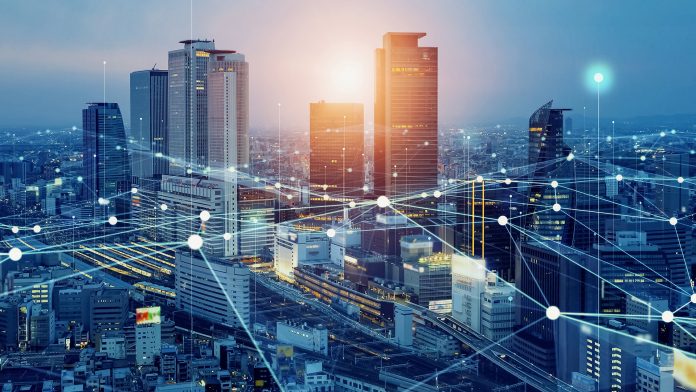Lucy Han of ABB takes us inside a new ‘smart community’ near the Swedish capital of Stockholm, an example of how new advances in energy management and people-focused technology are helping residents directly manage their carbon footprint – while enjoying the very best of modern community living.
Reducing energy costs is now a leading concern for European residents. Modern dwellers also want better carbon credentials combined with smart technology and home solutions that offer ease of use, access, and control so they can enjoy the very best of energy-smart, high-tech living.
As industrial systems are being digitalised and decarbonised as part of the global clean energy transition, so are residential buildings being transformed. This ushers in a new era of connected communities populated by eco-savvy residents who want to maximise their use of self-generated energy and lead more meaningful lives through engagement with smart technology.
A new nexus of forces is in play here: a shift in the balance of power between the top-down organisation of resources associated with ‘smart cities’ and the bottom-up action from the new generation of ‘smart communities’ popping up worldwide (particularly in Europe). These movements intersect, creating a vision for the energy-efficient communities of the future.
Sustainability, cost-effectiveness, and comfort come at a cost, however. The demands on domestic infrastructure—from heat pumps and electric vehicles to 5G—are escalating, transforming consumer decision-making and consumption habits. Tracking and sharing energy data effectively is a priority.
In this article, we will discuss how the ability to generate and share energy is enabling communities to lower their carbon footprint and energy cost; how everything from washing machines to energy and security systems can now be monitored and controlled via a single mobile app; and how a smart community outside Stockholm is providing a blueprint for clean, collaborative, integrated living.
Sustainable living at the touch of a button
Regarding the future of connected living, COVID-19 effectively condensed decades of social and behavioural change into just a few months. For example, touch-free interfaces for enhanced hygiene began to be integrated into office buildings. At the same time, space management, intelligent lighting and heating, ventilation, and air conditioning (HVAC) solutions will all help improve employee comfort and productivity in a post-pandemic world.
These smart devices can also help homeowners reduce their energy bills, satisfy residents’ demand for flexibility and autonomy, and, critically, reduce the overall carbon footprint of buildings, which, with their high-power demand, account for around 40% of global energy consumption.
A pioneering new project in Sweden featuring ABB Smart Buildings, Samsung SmartThings, and other partners is part of a growing trend of industry organisations collaborating to develop and deploy innovative energy management, energy consumption, and carbon emissions reduction technologies. At the same time, a holistic, user-friendly smart home system boosts comfort and ease of use.
The homes at Brobyholm will be the first buildings in the world to access a single holistic smart home solution, with all products and devices – including the ABB-free@home® smart home system, ABB’s energy distribution and management technology – all connected with Samsung’s SmartThings platform.
All property assets, down to appliances and energy generation, are managed with Internet of Things (IoT) installation, with apps integrated into Brobyholm’s property management platform for holistic management at the community level. Based on the Matter industry standard, energy, motion, and door and window devices are controlled via the Samsung SmartThings app. ABB’s Matter-based Eve devices, which include energy sockets, door and window contacts, and motion sensors, can also be controlled via SmartThings.
The first-of-a-kind integrated system is designed to give residents the flexibility and autonomy they crave by covering every need: security, media, lighting, blinds, door entry, electricity outlets, energy, appliances, heating, ventilation, HVAC, sensors, cameras, TV, and energy management. Using insights derived from the various connected devices on their phones, a new breed of residents can manage their total energy usage—everything from turning off lights remotely to electric vehicle (EV) charging and load management.
Using a separate dashboard, the property operator can even run appliance diagnostics and efficiency maintenance by monitoring and controlling existing appliances in an emergency and informing residents about new devices installed in the unit for added maintenance and operation efficiency.
Brobyholm: a design for life
While we used to think of smart technology only in terms of individual homes, the pace of adoption among multi-dwelling, tower and multi-villa developments is gathering pace. At the new housing development in Brobyholm, the project partners have responded by expanding their vision for smart living from single flats or single house levels to include whole properties and the wider community.
That vision is bold: carbon-free living within a generation in a new ‘exurb’ featuring 500 (eventually reaching 2,000) predominantly single-family homes, where residents are empowered to make energy and carbon savings via enhanced access to fully connected smart home technology.

To maximise potential, ABB’s InSite energy management system monitors and controls the main electrical assets, including photo voltaic (PV) generation, EV charging, and gas and water, to optimise home energy flows. In addition to the data collected from each household, forecast PV production, grid tariffs and consumption patterns are considered to balance the grid across the entire community through virtual energy sharing – significantly reducing costs for the families living there.
Based on energy data, the InSite energy management system manages loads to maximise the use of self-generated energy. For example, residents’ water tanks can be heated when there is surplus energy generated by solar panels—when solar power is low, devices will run in energy-saving mode. EVs located in designated mobility zones and equipped with ABB Terra AC charger technology can be used for energy optimisation and flexibility via ‘vehicle-to-everything’ technology.
Additionally, as all consumers and producers are connected under one easy-to-use platform, excess power can be sold on the flexibility market, generating income for all the inhabitants in Brobyholm.
The smart homes of the future
To accelerate the transition to net zero, we must consider issues like industry standardisation and regulatory certainty and the accessibility of technology, innovation, financing, and industry skills. The Net Zero Home project in Brobyholm and similar efforts help flesh this out in real time.
Brobyholm is a glimpse into the future of housing and sustainable living. It is made possible thanks to open technology, the adoption of industry standards, and vendors working together to innovate. Through this type of partnership and collaboration, it is possible to leverage cutting-edge technology and innovations that enhance people’s lives and reduce their reliance on precious global resources.
As the world’s demand for electricity grows, Brobyholm is an inspiring example of future-proofing and new thinking – from both project partners and energy consumers – and another exciting step forward in ABB’s ambition to create flexible, future-forward tech solutions.









